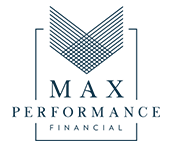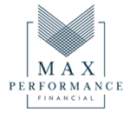As Americans, we tend to accumulate wealth in a “diversified” portfolio that typically consists of stock market investments and the equity in our homes.
A growing 401k is a sign that “retirement” is going to be a possibility, and hopefully sooner than later (we’ll avoid talking about the current year…I don’t want anyone getting depressed).
And if you own a home, you’ve probably seen a significant increase in market value over the last few years, which means more equity and, ultimately, more wealth.
But have you ever stopped to ask yourself the question: what’s the actual value of those dollars if I can’t spend them?

For example, let’s say you are 45 years old and have $250,000 in your 401k. That’s a nice value on paper, but what if you needed money now for an emergency, or to fund a medical procedure, or a larger car, or an opportunity that could provide a really great return on investment?
Can you access that $250,000? Well, it depends—do you meet the strict guidelines that allows you to access the cash or are you willing to pay taxes and a 10% penalty to access it?
Now let’s say your home has appreciated by $100,000 over the last 3 years. You now have another $100k of equity in your home that makes you $100k wealthier on paper. But can you access that cash?
If you’re lucky and the bank approves you for a HELOC after the stacks of paperwork they make you complete, you just might be able to get your hands on about $80k to use as a line of credit for whatever you want. But what if the bank says no?
Well, that’s when many Americans turn to credit cards. According to a 2022 report by Credit Karma, the average credit card debt in the US is $6,198. And the average interest rate on credit cards is over 18%!
So let me get this straight: Americans are borrowing money at 18% so they can fund a 401k in hopes of getting an 8% pre-tax rate of return?
I’m not the smartest guy in the room, but the math there just doesn’t add up…
Let’s get back to the original question: What’s the value of a dollar you can’t use?
Answer: ZERO at best, and -10% at worst since you have to borrow money to finance your life.
“Ok, so I’ve got the answer to the question” you’re thinking. “Now where’s the solution to the problem?!”
I’m glad you asked. Many of you have already discovered it: Dividend-paying whole life insurance.
Instead of locking dollars away in a place you can’t access them, why not store your dollars somewhere you not only have access to them, but get to grow them AND use them at the same time?
That’s the power of dividend-paying whole life insurance when it is designed properly. It allows you to
- Store your money safely
- Grow it with guaranteed interest
- Earn dividends and tax-free growth
- Borrow against it without penalty or fees for anything you want
- Continue to earn interest and dividends even while you are using it to finance your life
- Protect your family’s financial future
If you’ve already put a policy like this in place, congratulations! And if you haven’t, we should talk.
Having access to capital is one of the most important pieces to the wealth building puzzle. As one of my mentors used to say,
“When you have capital, opportunity will find you!”
If you’d like to hear more about topics like this, tune into the Wealth Warehouse podcast to catch a new episode every week. And feel free to schedule time with me if you want to dive into a deeper discussion.
Cheers,
David






